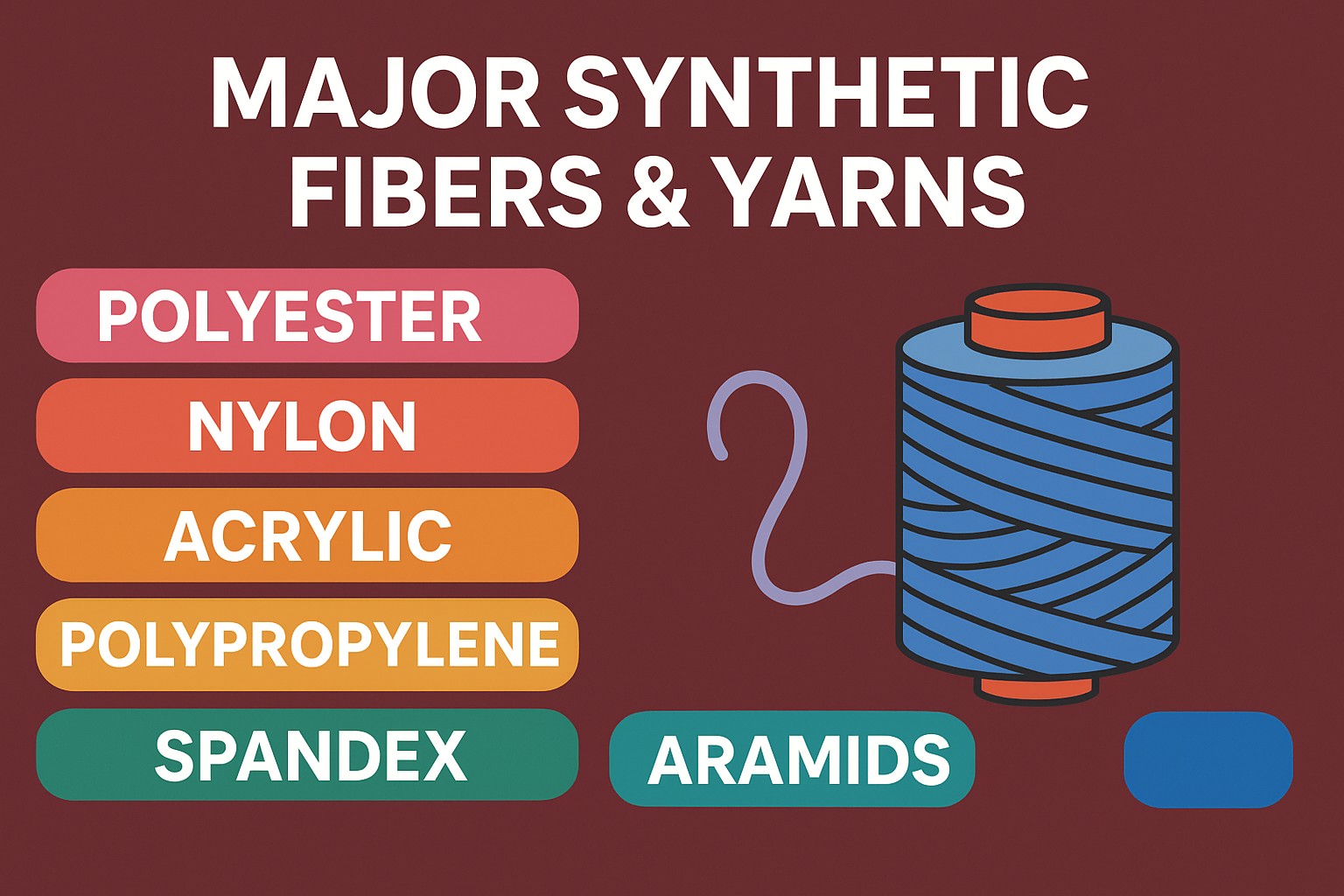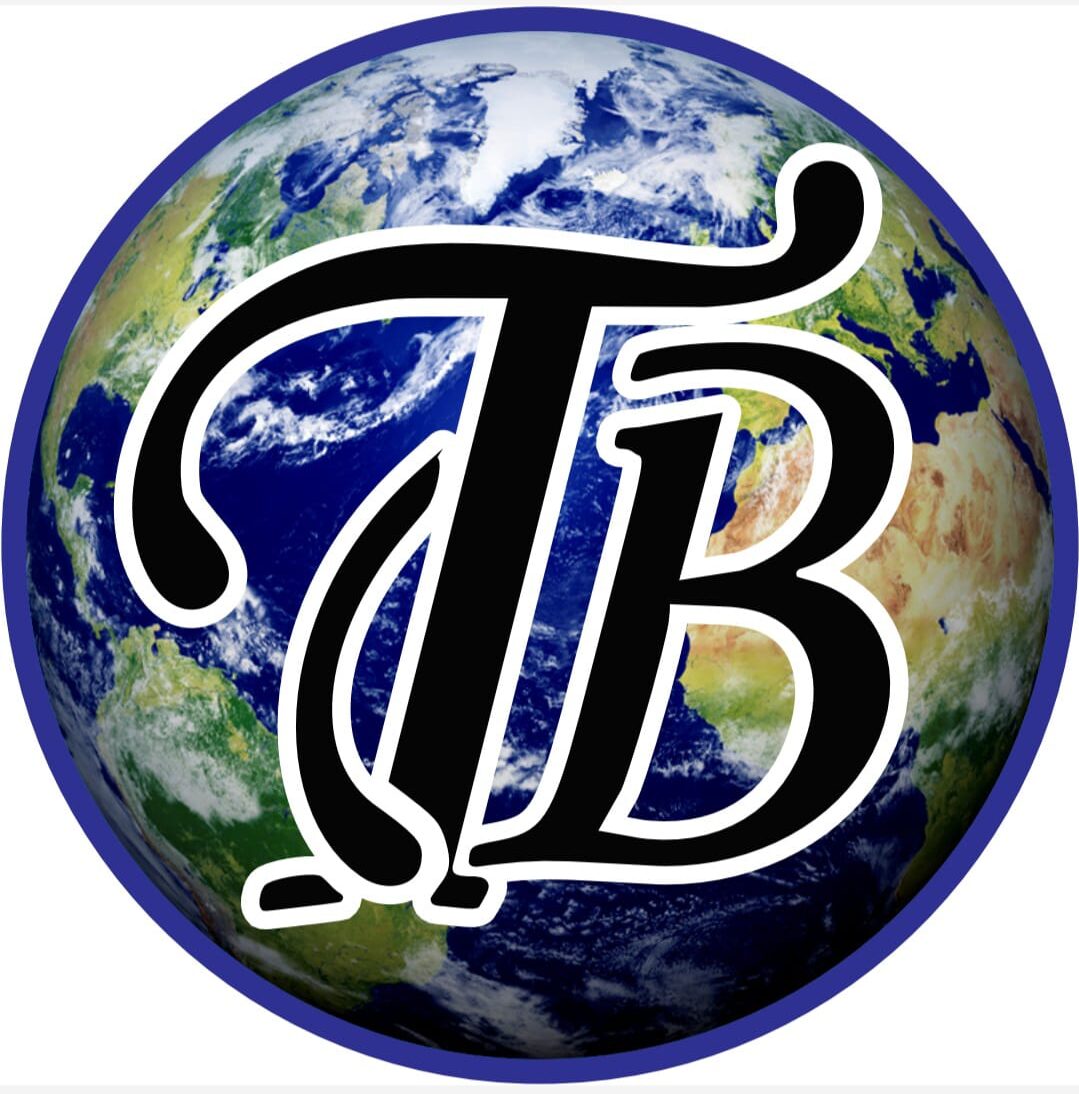🧵 Major Types of Synthetic Fibers & Yarns
By: Afzaal Khadim Khan

1. Polyester
- Most widely used synthetic fiber.
- Derived from petrochemicals (ethylene glycol + terephthalic acid).
- Variants: PET (Polyethylene terephthalate), PBT.
- Properties: Strong, wrinkle-resistant, quick-drying, dimensionally stable, affordable.
- Applications: Apparel (sportswear, outerwear), home textiles (bed sheets, curtains), industrial (ropes, filters).
- Yarn forms: Filament, staple fiber, textured yarn (DTY, FDY, POY).
2. Nylon (Polyamide)
- First synthetic fiber, invented by DuPont (1930s).
- Properties: High strength, elasticity, abrasion resistance, lightweight.
- Applications: Hosiery, swimwear, lingerie, carpets, ropes, tire cords.
- Yarn forms: Multifilament yarn, textured yarn, high-tenacity yarn.
3. Acrylic
- Known as “synthetic wool”.
- Properties: Soft, warm, lightweight, resistant to moths/chemicals, but lower durability than polyester.
- Applications: Sweaters, knitwear, blankets, upholstery fabrics, outdoor products.
- Yarn forms: Spun yarns, bulked continuous filament.
4. Polypropylene (PP)
- Lightest synthetic fiber (floats on water).
- Properties: High moisture-wicking, resistant to chemicals, low cost.
- Applications: Sportswear, nonwovens (disposables, masks), ropes, geotextiles, carpets.
- Yarn forms: Multifilament, BCF yarn, spun-bond.
5. Spandex (Elastane / Lycra)
- Known for extraordinary elasticity (up to 5–8x stretch).
- Properties: Lightweight, durable, resistant to perspiration and body oils.
- Applications: Sportswear, yoga pants, lingerie, medical wear.
- Yarn forms: Core-spun yarn (blended with cotton, polyester, nylon).
6. Aramids (Kevlar, Nomex)
- High-performance synthetic fibers.
- Properties: Heat-resistant, flame-retardant, very high tensile strength.
- Applications: Bulletproof vests, protective clothing, industrial belts, aerospace.
- Yarn forms: Continuous filament yarn, spun yarn.
7. Vinyl and PVC Fibers
- Made from polyvinyl chloride (PVC) or polyvinyl alcohol (PVA).
- Properties: Resistant to moisture, mildew, flame.
- Applications: Upholstery, tarpaulins, industrial fabrics.
🔄 Common Yarn Types in Synthetics
- Filament Yarn (continuous long fibers, e.g., polyester filament).
- Textured Yarn (DTY, ATY, FDY, POY) — gives bulk, stretch, or softness.
- Staple Fiber Yarns (short cut fibers spun like cotton).
- High Tenacity Yarns (industrial use, ropes, tire cords).
- Blended Yarns (synthetic + natural, e.g., polyester-cotton, poly-viscose).
✅ Summary:
- Mainstream synthetics: Polyester, Nylon, Acrylic, Polypropylene, Spandex.
- Specialty synthetics: Aramids, Vinyl fibers.
- Yarns: Filament, textured, spun/staple, blended.
Textiles Bar
The Best Information Website for Synthetic Fibers
In today’s fast-paced textile industry, synthetic fibers have become the backbone of global manufacturing. From polyester and nylon to viscose, acrylic, and blended yarns, synthetic fibers drive efficiency, cost-effectiveness, and performance in apparel, home textiles, and industrial fabrics. For professionals seeking reliable updates, technical insights, and market intelligence on synthetic fibers and yarns, Textiles Bar stands out as the most trusted information platform.
At Textiles Bar, textile professionals gain access to a comprehensive database of technical information related to synthetic fibers. The platform provides detailed charts, fiber specifications, yarn conversion tools, GSM calculators, and practical resources that empower manufacturers, traders, and buyers to make informed decisions. Whether you’re calculating fabric weights or analyzing yarn consumption, Textiles Bar ensures technical clarity and precision.
One of the most valuable features of Textiles Bar is its live price updates for synthetic fibers and yarns. Prices of polyester, viscose, acrylic, and blends fluctuate frequently due to oil prices, demand cycles, and international trade conditions. Staying updated with real-time data helps mills, buying houses, and exporters negotiate better contracts, manage costs, and respond quickly to market shifts.
Moreover, the website curates global offers and market trends, covering China, India, Pakistan, and other leading textile hubs. This ensures that users get a broader perspective of competitive markets and can benchmark prices across regions.
Textiles Bar is not just an information portal – it is a decision-making partner for the textile industry. By combining technical resources with live commercial data, it bridges the gap between research and business execution.
For textile professionals dealing with synthetic fibers, Textiles Bar is the ultimate destination for knowledge, insights, and updates – a platform where information transforms into opportunity.
